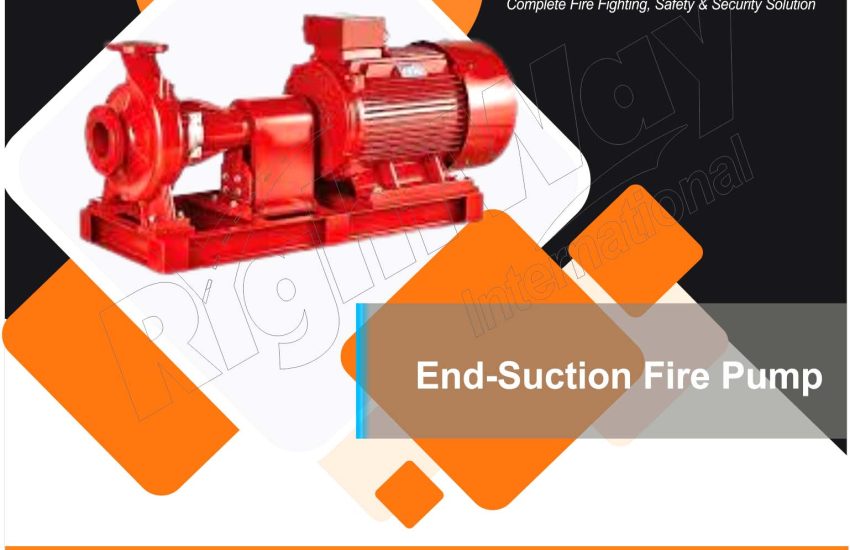End-Suction Fire Pump are a type of centrifugal pump specifically designed to provide the high-pressure water flow required for fire protection systems. They are widely used in various applications, including commercial, industrial, and residential fire safety systems. This article explores the features, operation, applications, and benefits of end-suction fire pumps.
How End-Suction Fire Pumps Work
End-suction fire pumps operate based on centrifugal force, which is generated by a rotating impeller. Here’s a breakdown of their operation:
- Water Inlet: Water enters the pump through an inlet port located on the end of the pump casing.
- Impeller Rotation: The impeller, a rotating component with curved blades, spins rapidly to create centrifugal force.
- Centrifugal Force: This force pushes the water outward, increasing its velocity and pressure.
- Discharge: The high-pressure water exits the pump through the discharge port, which is also located on the end of the pump casing.
Features of End-Suction Fire Pumps
- Compact Design
- Description: End-suction pumps have a compact and space-efficient design, making them suitable for installations where space is limited.
- Single-Suction Port
- Description: These pumps feature a single suction port located on the end of the casing, simplifying the design and installation process.
- Horizontal Configuration
- Description: Typically configured horizontally, which makes them easier to install and maintain in various settings.
- Versatile Construction
- Description: Available in a range of materials, including cast iron, bronze, and stainless steel, to suit different environmental conditions and applications.
Applications of End-Suction Fire Pumps
- Commercial Buildings
- Use: Ensures adequate water pressure for fire suppression systems in office buildings, shopping centers, and hotels.
- Industrial Facilities
- Use: Provides reliable fire protection for industrial plants and manufacturing facilities where high-value assets are at risk.
- Residential Complexes
- Use: Suitable for large residential buildings and apartment complexes, offering efficient fire safety solutions.
- Municipal Fire Protection
- Use: Utilized in municipal fire protection systems to supply water to fire hydrants and other firefighting equipment.
- Educational Institutions
- Use: Ensures fire safety in schools, universities, and other educational facilities.
Benefits of End-Suction Fire Pumps
- Space Efficiency
- Benefit: The compact design allows for easy installation in confined spaces, making it ideal for urban and retrofitting applications.
- Ease of Maintenance
- Benefit: The simple design and horizontal configuration facilitate easier access for maintenance and repair, reducing downtime.
- Cost-Effectiveness
- Benefit: Generally more affordable compared to other types of fire pumps due to their straightforward construction and operation.
- High Performance
- Benefit: Capable of delivering the necessary water pressure for effective fire suppression, ensuring reliable performance in emergency situations.
- Versatility
- Benefit: Available in various configurations and materials to meet different requirements and environmental conditions.
Installation and Maintenance
- Installation
- Considerations: Ensure proper alignment and secure mounting during installation. Adequate space should be provided for both the pump and associated piping to facilitate ease of operation and maintenance.
- Maintenance
- Considerations: Regular inspections are essential to ensure optimal performance. Maintenance tasks include checking for leaks, monitoring pressure levels, and cleaning or replacing components as necessary.
Conclusion
End-Suction Fire Pump are a reliable and efficient choice for providing high-pressure water flow in fire protection systems. Their compact design, ease of maintenance, and cost-effectiveness make them a popular option for a wide range of applications, from commercial and industrial buildings to residential complexes. Understanding their features, benefits, and proper maintenance practices ensures they perform effectively and contribute to overall fire safety.


